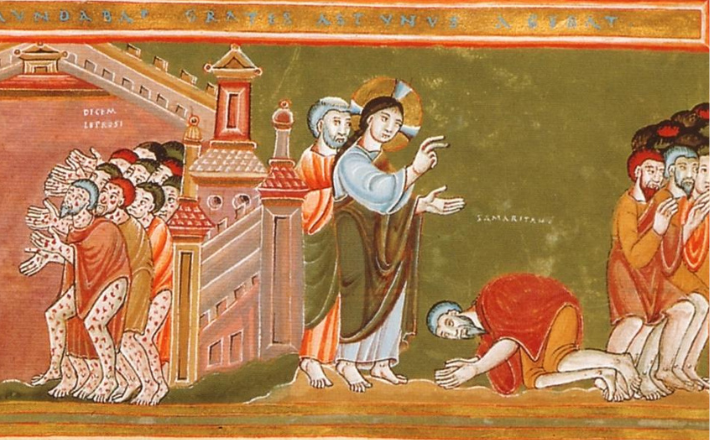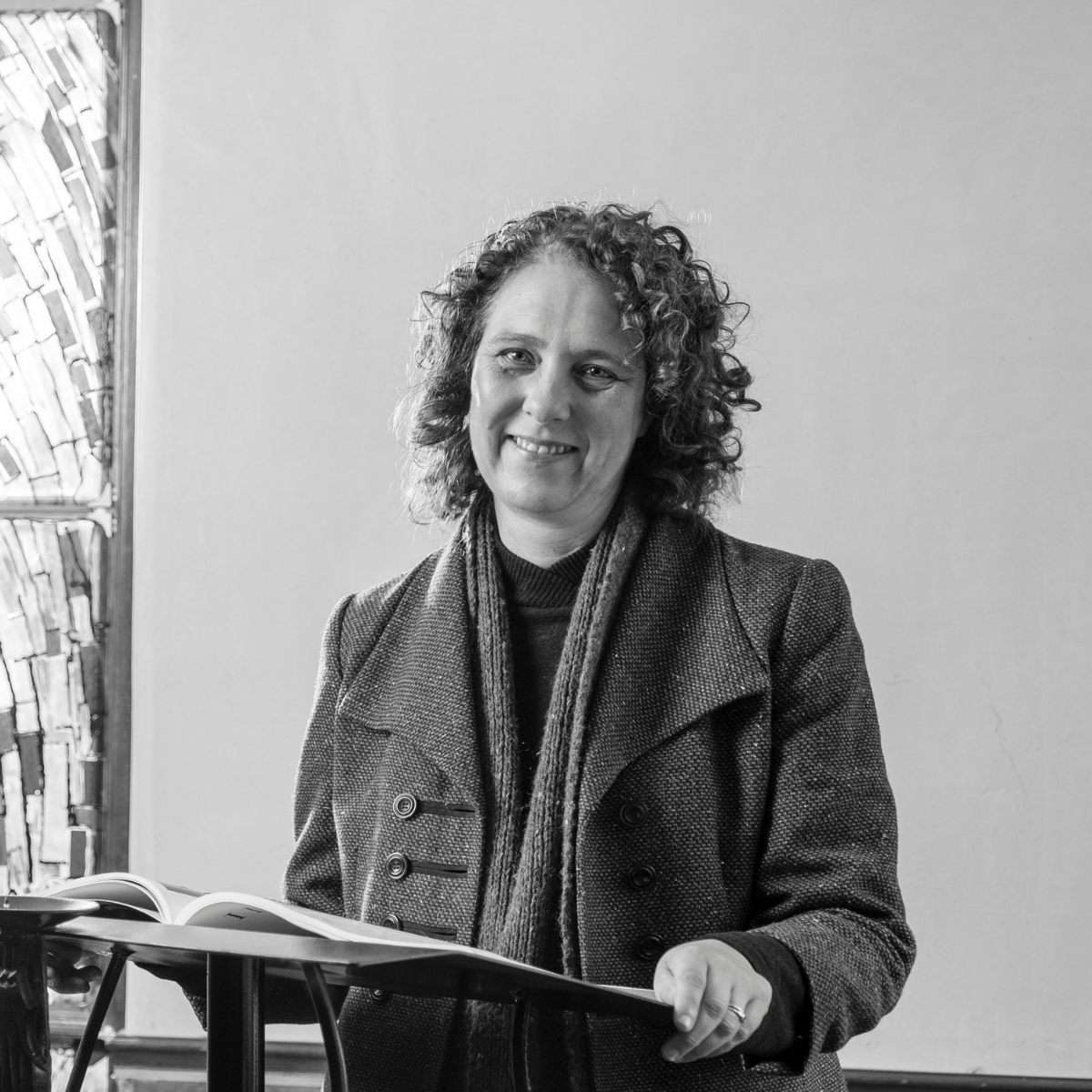Commentary on 2 Kings 5:1-3, 7-15c
This week’s lectionary reading offers a poignant account of illness and the extreme measures people will go to in order to be healed. The story starts with Naaman, the imposing, valiant military official in the king of Aram’s army, who, despite his military exploits, suffers from a debilitating skin disease that carries with it connotations of shame, disgust, and isolation. In a culture where purity is greatly valued, the stigma associated with this disease causes the honorable Naaman to be ostracized from the community and shut out of the cult.
Actually, the lectionary text leaves out a critical part of the story that underscores Naaman’s desperate search for healing: In verses 4–6, Naaman first goes to the local king of Aram, who sends him to the king of Israel with an introductory letter as well as the advice to take a lot of money and clothes to encourage the Israelite king to help him. Naaman is well connected and well endowed. He knows people and taps into his connections to help him in this time of need. But all the money in the world, all the influence and power Naaman yields cannot cure his ailment.
In verse 7, we read the king of Israel’s lament when he is approached by a hopeful Naaman, in which he bemoans the limits of his power, contending that he is not God, who wields power over life and death. He acknowledges that to heal this man of his skin disease is not within his range of powers.
Help, though, comes from an unlikely source. In stark contrast to the renowned military leader, a lowly slave girl, a victim of one of the military exploits presided over by Namaan, offers unsolicited advice to Naaman’s wife as to where this suffering man in whose house she ended up might find healing. Remarkably, not only does the wife of Namaan listen to and believe her slave girl, but Naaman also hears and believes his wife, who, in terms of the social standing of the day, would typically have been overlooked and disregarded.
If one reads between the lines, one finds that Elisha, the man of God referenced in the little slave girl’s counsel, is also overlooked and disregarded. It is telling that Naaman does not go straight to the man of God. Also, the king does not think of directing Namaan to Elisha; perhaps this reflects the king’s inability to recognize the prophet’s power in Israel. Nevertheless, Elisha, who finds himself on the fringe or periphery of society, inserts himself into the narrative, telling the despairing king to send Naaman to him so that he might learn what the little girl said all along, that there is a prophet of God in Israel who might heal him from his skin disease.
Naaman and his entire entourage rush over, expecting first-class treatment. He is a man of great stature, after all. However, Elisha does not even come out. He sends a message through his servants, advising Naaman to wash himself seven times in the Jordan. Naaman does not appreciate this advice at all! Where he comes from, there are plenty of rivers where he could have gone bathing instead. Once again, it is the servants who talk sense into him. And remarkably, once again, Naaman listens to his servants. Elisha was right, as were the servant girl and his wife and servants. In the end, Naaman is healed. However, as evident below, there is more at stake than merely physical healing in this week’s lectionary reading.
There are several angles one could explore in terms of this story. First, it is noteworthy that this fascinating tale of illness and recovery dramatically breaks the well-established link between sin and suffering in the Hebrew Bible Prophets and much of the Deuteronomistic history. Nowhere is it said that Namaan did anything to deserve the disease that has attacked his body and affected his mind and psyche. Instead, the narrative emphasizes that Naaman is successful in all aspects of his life, and yet he suffers from a debilitating ailment. What’s more, all the characters in this narrative are deeply invested in doing whatever they can to reintegrate Naaman into the community.
Second, the story wants to make it clear that healing is not in human hands. The narrative offers a candid look at a sick man’s increasingly desperate actions for a cure: Naaman will do anything—travel long distances, use his political networks, pay a lot of money to be healthy again. And yet, neither the king nor the prophet can heal Naaman. Elisha’s instruction to Naaman to bathe in the Jordan River symbolizes no human involvement in Naaman’s rebirth as he emerges from the water, a new man with skin like that of a little boy. Moreover, from Naaman’s final response, “Now I know there is a God in Israel,” instead of “Now I know there is a prophet in Israel,” it is evident that healing is attributed to God.
Third, as noted earlier, healing in this story is much broader than merely on a physical level. True transformation occurs when this important military leader listens to those not seen, heard, or respected, whose wisdom, insight, and know-how prove central to healing and transforming the individual and society. Naaman, as a result, is a changed man on more than just the physical level as a result of it, as evident in the reference to Naaman having skin like a little boy’s—perhaps signaling that he is now viewing the world like a little girl, like his wife, like his servants.
Finally, we need to be cognizant that we are preaching this text and many healing stories in the New Testament in congregations where not everyone is healed. For many individuals and families, healing implies having to learn to live with disability, rooted in the understanding that all human beings are, as Thomas Reynolds has argued, “only partially and temporarily able-bodied.”1 We are born vulnerable, and as we age, we increasingly become vulnerable and susceptible to disease that may lead to stigma and social isolation just as much as what Naaman experienced. The story of illness and healing in 2 Kings 5 thus shows us what the world should be: a place where there is a place for the Naamans of the world, even if they are not to be healed.
Notes
- Thomas Reynolds, Vulnerable Communion: A Theology of Disability and Hospitality (Brazos, 2008). 29.


October 12, 2025